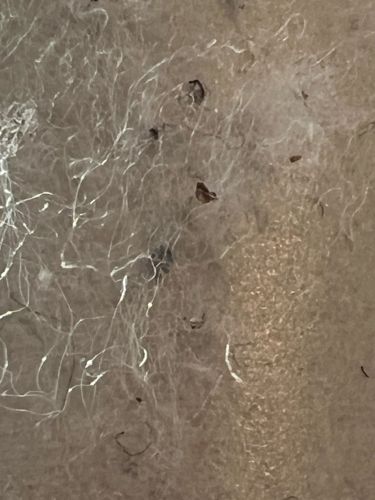Mold Mite
Scientific Name: Tyrophagus putrescentiae (often referred to generically as 'mold mites')
Order & Family: Order: Sarcoptiformes, Family: Acaridae
Size: Typically 0.3 - 0.7 mm in length, almost microscopic and often barely visible to the naked eye.

Natural Habitat
Damp, humid environments with high organic matter, especially where mold or fungi are present. This includes stored foods (grains, cheese, dried fruits), animal feed, house dust, and sometimes soil or decaying plant material.
Diet & Feeding
Feeds primarily on fungi, molds, yeasts, and decaying organic matter. They are especially attracted to fatty foods, high-protein substances, and grains. The white filamentous structures in the image strongly suggest fungal growth, which would be their food source.
Behavior Patterns
Mold mites are often found in large aggregations, especially when conditions are favorable (high humidity and abundant food sources). They reproduce quickly under optimal conditions. Their presence often indicates persistent dampness and mold growth. They are slow-moving and tend to avoid light.
Risks & Benefits
Potential risks include being a common allergen, potentially causing dermatitis, respiratory issues (like asthma), and other allergic reactions in sensitive individuals upon exposure to high populations or their shed exoskeletons. They can also contaminate and spoil stored food products, making them unfit for consumption. There are no significant benefits associated with their presence in human environments, other than their role as decomposers in natural ecosystems.
Identified on: 10/22/2025